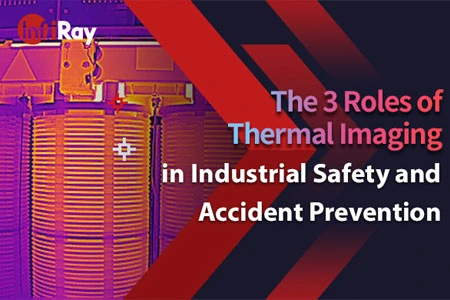Most Comprehensive: What is A Thermal Surveillance Camera

In the realm of security and surveillance technology, thermal surveillance cameras stand out as powerful tools capable of providing unparalleled visibility, especially in low-light or no-light conditions. But what exactly are thermal surveillance cameras, and how do they work? In this comprehensive guide, we'll delve into the world of thermal imaging, exploring its functionality, applications, advantages, and future trends.
Introduction to Thermal Surveillance Cameras
Thermal surveillance cameras utilize thermal imaging technology to detect and capture infrared radiation emitted by objects, converting it into visible images. Unlike traditional cameras that rely on visible light, thermal cameras can "see" heat, making them invaluable for various applications, including security, wildlife monitoring, and industrial inspections.

How Thermal Surveillance Cameras Work
Thermal surveillance cameras work based on the principle of thermal radiation. Every object with a temperature above absolute zero emits infrared radiation, which thermal cameras detect and convert into visible images. This allows them to produce images even in complete darkness or adverse weather conditions.
Applications of Thermal Surveillance Cameras
Thermal surveillance cameras boast a myriad of applications across diverse domains, each harnessing their unique capabilities for enhanced monitoring and security.
1. Security and Surveillance
Thermal cameras are pivotal in perimeter monitoring, swiftly detecting intruders even in pitch darkness or adverse weather conditions. Their unerring eye provides an added layer of protection, bolstering situational awareness and response efficacy.

2. Wildlife Monitoring
Thermal surveillance cameras facilitate crucial conservation efforts. From tracking elusive animals to thwarting poachers, these cameras offer invaluable insights into animal behavior, aiding in ecological research and habitat preservation.
3. Industrial Inspection
In the industrial landscape, thermal cameras play a pivotal role in industrial inspections, pinpointing equipment malfunctions, detecting leaks, and ensuring workplace safety. Their ability to visualize heat anomalies enables proactive maintenance, averting potential disasters and optimizing operational efficiency.
4. Search and Rescue Operations
Thermal surveillance cameras serve as beacons of hope, guiding rescue teams through treacherous terrains and disaster zones. Their ability to detect body heat aids in locating missing persons swiftly, expediting rescue efforts and saving lives.

Advantages of Thermal Surveillance Cameras
The advantages of thermal surveillance cameras extend far beyond conventional security measures, offering unparalleled benefits across diverse applications.
1. Enhanced Night Vision Capabilities:
Thermal cameras enable surveillance in complete darkness without the need for artificial lighting, ensuring continuous monitoring around the clock.
2. Detection of Heat Signatures:
Thermal cameras can detect heat signatures, allowing for the identification of hidden threats that may evade traditional surveillance methods, thereby enhancing threat detection and response effectiveness.
3. Non-reliance on Visible Light:
Operating independently of lighting conditions, thermal surveillance cameras are invaluable in adverse weather conditions, such as fog or smoke, where visibility is compromised.
4. Long-Range Detection:
Thermal cameras boast long-range detection capabilities, enabling surveillance over vast areas without compromising image clarity or quality, thereby enhancing monitoring efficiency, particularly in expansive environments.

Factors to Consider When Choosing a Thermal Surveillance Camera
When selecting a thermal surveillance camera, important factors to consider include resolution, sensitivity, temperature range, integration with existing systems, and cost considerations.
Real-World Applications of Thermal Surveillance Camera
Thermal surveillance cameras are already making a significant impact in various fields:
Urban surveillance systems enhancing city safety and security.
Perimeter security, detecting and preventing illegal perimeter crossings.
Wildlife conservation efforts, protecting endangered species and habitats.

Future Trends in Thermal Surveillance Technology
The future of thermal surveillance technology holds promising advancements:
Improved resolution and sensitivity for higher-quality images.
Integration with artificial intelligence and machine learning for advanced analytics.
Miniaturization and mobility for enhanced portability and flexibility.
Thermal surveillance cameras represent a cornerstone in modern security and monitoring systems, providing invaluable capabilities in various applications. As technology continues to evolve, these cameras will play an increasingly vital role in ensuring safety, security, and efficiency across different sectors.
In conclusion, thermal surveillance cameras are not just tools; they are guardians, helping us navigate the unseen world of heat and providing a new dimension to our perception of the environment.

 français
français  Deutsch
Deutsch  Español
Español  italiano
italiano  русский
русский  português
português  العربية
العربية  日本語
日本語  한국어
한국어  magyar
magyar 









